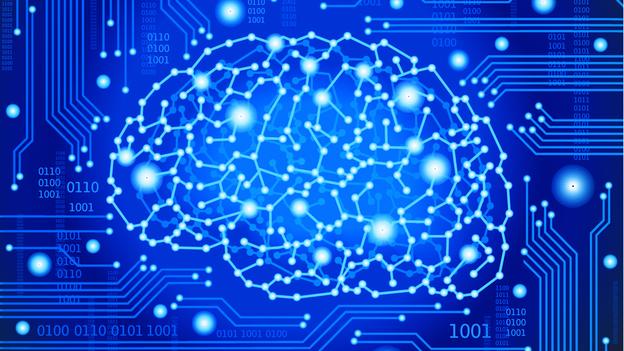 Scientists at IBM Research have created a neuromorphic (brain-like) computer chip, featuring 1 million programmable neurons and 256 million programmable synapses.
Scientists at IBM Research have created a neuromorphic (brain-like) computer chip, featuring 1 million programmable neurons and 256 million programmable synapses.
IBM this month unveiled “TrueNorth” – the most advanced and powerful computer chip of its kind ever built. This neurosynaptic processor is the first to achieve one million individually programmable neurons, sixteen times more than the current largest neuromorphic chip. Designed to mimic the structure of the human brain, it represents a major departure from older computer architectures of the last 70 years. By merging the pattern recognition abilities of neurosynaptic chips with traditional system layouts, researchers aim to create “holistic computing intelligence”.
Measured by device count, TrueNorth is the largest IBM chip ever fabricated, with 5.4 billion transistors at 28nm. Yet it consumes under 70 milliwatts while running at biological real time – orders of magnitude less power than a typical modern processor. This amazing feat is made possible because neurosynaptic chips are event driven, as opposed to the “always on” operation of traditional chips. In other words, they function only when needed, resulting in vastly less energy use and a much cooler temperature. It is hoped this combination of ultra-efficient power consumption and entirely new system architecture will allow computers to far more accurately emulate the brain.
TrueNorth is composed of 4,096 cores, with each of these modules integrating memory, computation and communication. The cores are distributed in a parallel, flexible and fault-tolerant grid – able to continue operating when individual cores fail, similar to a biological system. And – like a brain cortex – adjacent TrueNorth chips can be seamlessly tiled and scaled up. To demonstrate this scalability, IBM also revealed a 16-chip motherboard with 16 million programmable neurons: roughly equivalent to a frog brain.
Each of these “neurons” features 256 inputs, whereas the human brain averages 10,000. That may sound like a huge difference – but in the world of computers and technology, progress tends to be exponential. In other words, we could see machines as computationally powerful as a human brain within 10–15 years. The implications are staggering. When sufficiently scaled up, this new generation of “cognitive computers” could transform society, leading to a myriad of applications able to intelligently analyse visual, auditory, and multi-sensory data.

